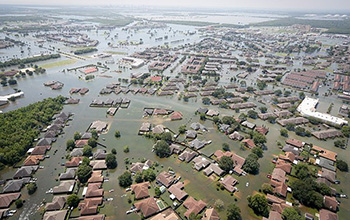
Big data-derived tool facilitates closer monitoring of recovery from natural disasters
Researchers have developed a framework for monitoring communities’ resilience
A big data-derived tool facilitates closer monitoring of recovery from natural disasters.
A big data-derived tool facilitates closer monitoring of recovery from natural disasters.
By analyzing visitation patterns to essential establishments like pharmacies, religious centers and grocery stores during Hurricane Harvey, researchers at Texas A&M University have developed a framework to assess the recovery of communities after natural disasters in nearly real-time.
The scientists say the information gleaned from their analysis could help agencies allocate resources effectively among communities ailing from a disaster.
“Neighboring communities can be impacted very differently after a natural catastrophic event,” said Ali Mostafavi, a civil engineer at Texas A&M University. “We need to identify which areas can recover faster than others, and which areas are impacted more than others so we can allocate resources to areas that need them more.”
The U.S. National Science Foundation-funded researchers reported their findings in Interface.
The standard way of obtaining data needed to estimate resilience is through surveys. The questions considered, among others, are how and to what extent businesses or households are affected by the natural disaster and the stage of recovery. However, Mostafavi said these survey-based methods, although extremely useful, take a long time to conduct, with the results becoming available only many months after the disaster.
A big data-derived tool facilitates closer monitoring of recovery from natural disasters.
A big data-derived tool facilitates closer monitoring of recovery from natural disasters.
By analyzing visitation patterns to essential establishments like pharmacies, religious centers and grocery stores during Hurricane Harvey, researchers at Texas A&M University have developed a framework to assess the recovery of communities after natural disasters in nearly real-time.
The scientists say the information gleaned from their analysis could help agencies allocate resources effectively among communities ailing from a disaster.
“Neighboring communities can be impacted very differently after a natural catastrophic event,” said Ali Mostafavi, a civil engineer at Texas A&M University. “We need to identify which areas can recover faster than others, and which areas are impacted more than others so we can allocate resources to areas that need them more.”
The U.S. National Science Foundation-funded researchers reported their findings in Interface.
The standard way of obtaining data needed to estimate resilience is through surveys. The questions considered, among others, are how and to what extent businesses or households are affected by the natural disaster and the stage of recovery. However, Mostafavi said these survey-based methods, although extremely useful, take a long time to conduct, with the results becoming available only many months after the disaster.
www.miragenews.com



